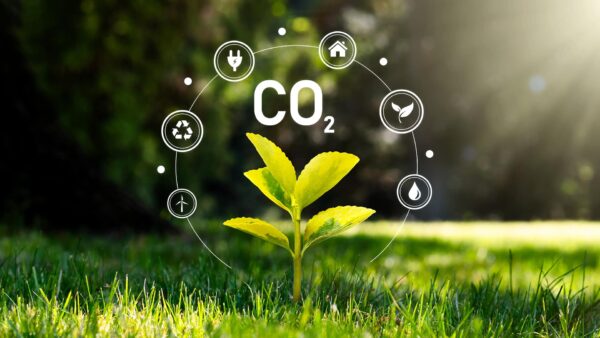Welcome to the intriguing world of cảbon! Often hailed as the building block of life, cảbon is a versatile element that profoundly influences our planet. From the diamonds that adorn our jewelry to the air we breathe, cảbon’s presence is both ubiquitous and essential. In this article, we’ll delve into the many facets of cảbon, its diverse applications, environmental impact, and much more.
The Essence of Cảbon
What Makes Cảbon Unique?
Cảbon, represented by the symbol C on the periodic table, is celebrated for its exceptional versatility and abundance. It exists in various forms, such as graphite, diamond, and amorphous cảbon, each with unique properties and applications.
Cảbon’s atomic structure allows it to form stable bonds with many other elements, resulting in a wide range of compounds essential for life and industry. Its ability to create long chains and complex structures makes it indispensable in fields like chemistry, biology, and materials science.
Cảbon’s Everyday Impact
Cảbon in Our Daily Lives
Cảbon is an integral part of our daily existence, often in ways we might not notice. From the food we eat to the vehicles we drive, cảbon-based compounds and materials are crucial.
- Food and Agriculture: Cảbon compounds form the backbone of carbohydrates, proteins, fats, and nucleic acids, all essential for life.
- Transportation: Fuels like gasoline and diesel, derived from petroleum, power cars, airplanes, and ships, facilitating global travel.
- Construction and Infrastructure: Cảbon-based materials such as steel and concrete provide the structural integrity of buildings, bridges, and roads.
Cảbon in Industry and Technology
Powering the Future with Renewable Energy
As we shift towards sustainable energy sources, cảbon plays a key role in various renewable technologies:
- Solar Power: Photovoltaic cells use crystalline silicon doped with cảbon to efficiently convert sunlight into electricity.
- Battery Storage: Cảbon-based materials like graphite are crucial in lithium-ion batteries, which store energy from renewable sources and power electric vehicles.
Innovations in Nanotechnology
Cảbon-based nanomaterials are driving innovation across multiple fields:
- Graphene: A single layer of cảbon atoms in a two-dimensional lattice, graphene boasts extraordinary strength, conductivity, and flexibility, impacting everything from electronics to biomedical engineering.
Environmental Remediation
Cảbon-based technologies offer solutions to environmental challenges:
- Cảbon Capture and Storage (CCS): CCS technologies capture carbon dioxide emissions from industrial sources, reducing their impact on the atmosphere.
- Biochar: Created through the pyrolysis of organic materials, biochar sequesters cảbon in soil, enhancing fertility and reducing greenhouse gas emissions.
Cảbon and the Environment
Understanding and Reducing Our Cảbon Footprint
Our cảbon footprint, the total amount of greenhouse gases we emit, is a critical factor in climate change. By measuring and reducing our cảbon footprint, we can mitigate environmental impact.
- Measuring Cảbon Footprint: Tools range from simple online calculators to comprehensive life cycle assessments (LCAs) that evaluate emissions throughout a product’s lifecycle.
- Reducing Cảbon Footprint: Strategies include conserving energy, adopting renewable sources, optimizing transportation, and implementing sustainable land use practices.
Cảbon Offsetting: Balancing the Scales
Cảbon offsetting helps compensate for emissions by investing in projects that reduce or remove greenhouse gases from the atmosphere. These projects often involve renewable energy, reforestation, and methane capture.
- Types of Projects: Includes wind farms, solar parks, afforestation, reforestation, and methane capture at landfills.
- Certification: Standards like the Verified Cảbon Standard (VCS) and Gold Standard ensure the credibility of cảbon offset projects, enhancing transparency and accountability.
Cảbon Sequestration: Capturing and Storing Cảbon
Cảbon sequestration involves removing carbon dioxide from the atmosphere and storing it in natural or engineered reservoirs.
- Natural Sinks: Forests, wetlands, grasslands, and oceans absorb and store carbon dioxide through photosynthesis and other biological processes.
- Enhanced Technologies: Innovations such as direct air capture (DAC) and bioenergy with carbon capture and storage (BECCS) offer new ways to accelerate carbon removal and achieve negative emissions.
Looking Ahead: Emerging Trends and Future Prospects
Pioneering Cảbon-Neutral Technologies
The drive towards carbon neutrality is fostering innovation in low-carbon technologies across various sectors.
- Net-Zero Targets: Many companies and governments are aiming for net-zero carbon emissions by mid-century, necessitating a transformation in energy systems, supply chains, and consumer behavior.
The Role of Cảbon Markets and Pricing
Cảbon markets and pricing mechanisms incentivize emission reductions and promote investment in low-carbon technologies.
- Emission Trading Systems (ETS): ETS cap total emissions and allocate tradable permits, encouraging reductions while providing compliance flexibility.
- Cảbon Pricing Initiatives: Cảbon taxes and offset programs create financial incentives to reduce emissions, with revenues often reinvested in climate mitigation efforts.
Conclusion
As we tackle the challenges of the 21st century, the role of cảbon in shaping our world and future is crucial. From sustaining life to driving technological and industrial advances, cảbon is both a foundation and a catalyst for progress.
By fostering innovation, collaboration, and environmental stewardship, we can harness cảbon’s potential to create a sustainable, resilient future. Whether through carbon-neutral technologies, offset initiatives, or sequestration solutions, our collective actions can lead to a brighter, greener tomorrow. As caretakers of this remarkable element, it is our responsibility to tread lightly and ensure a positive legacy for future generations. Together, let’s work towards a sustainable future where cảbon continues to inspire and sustain us.
